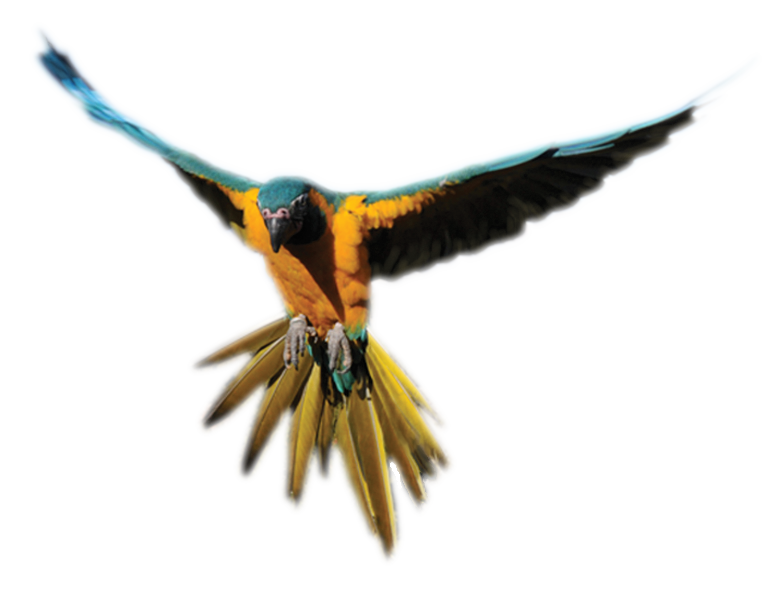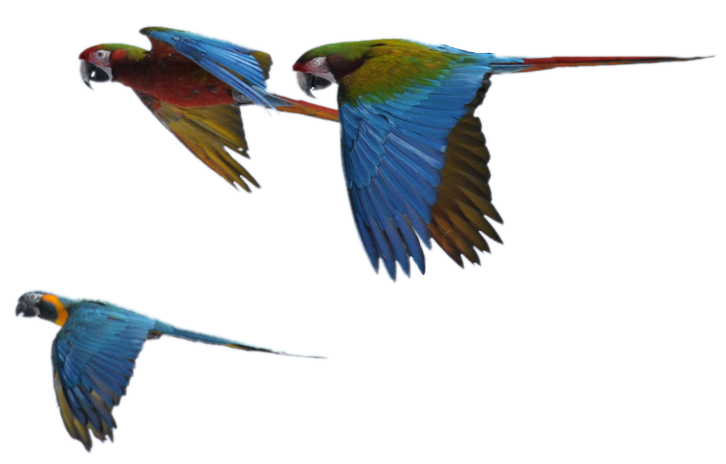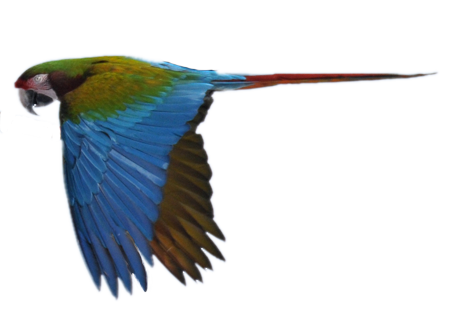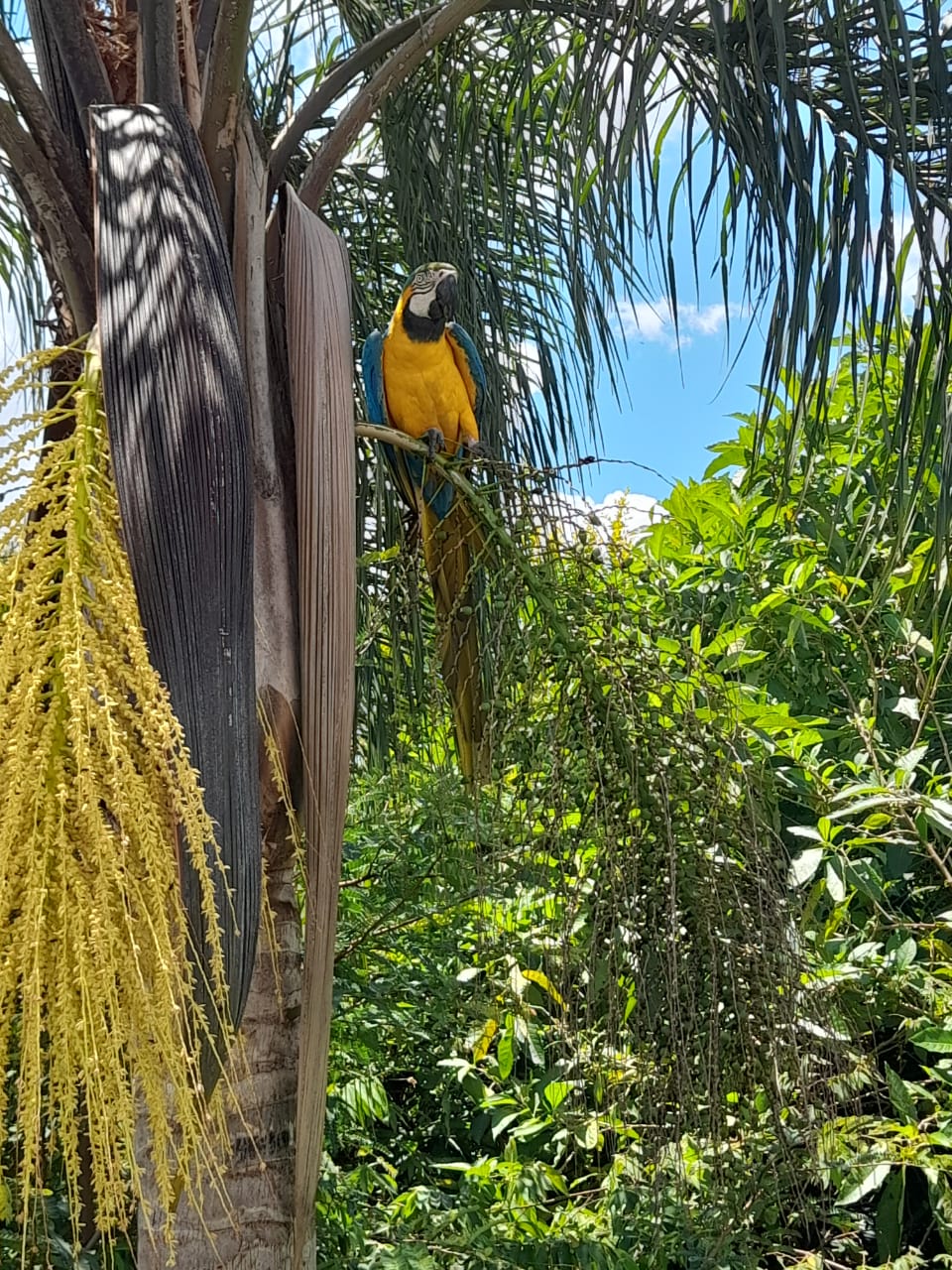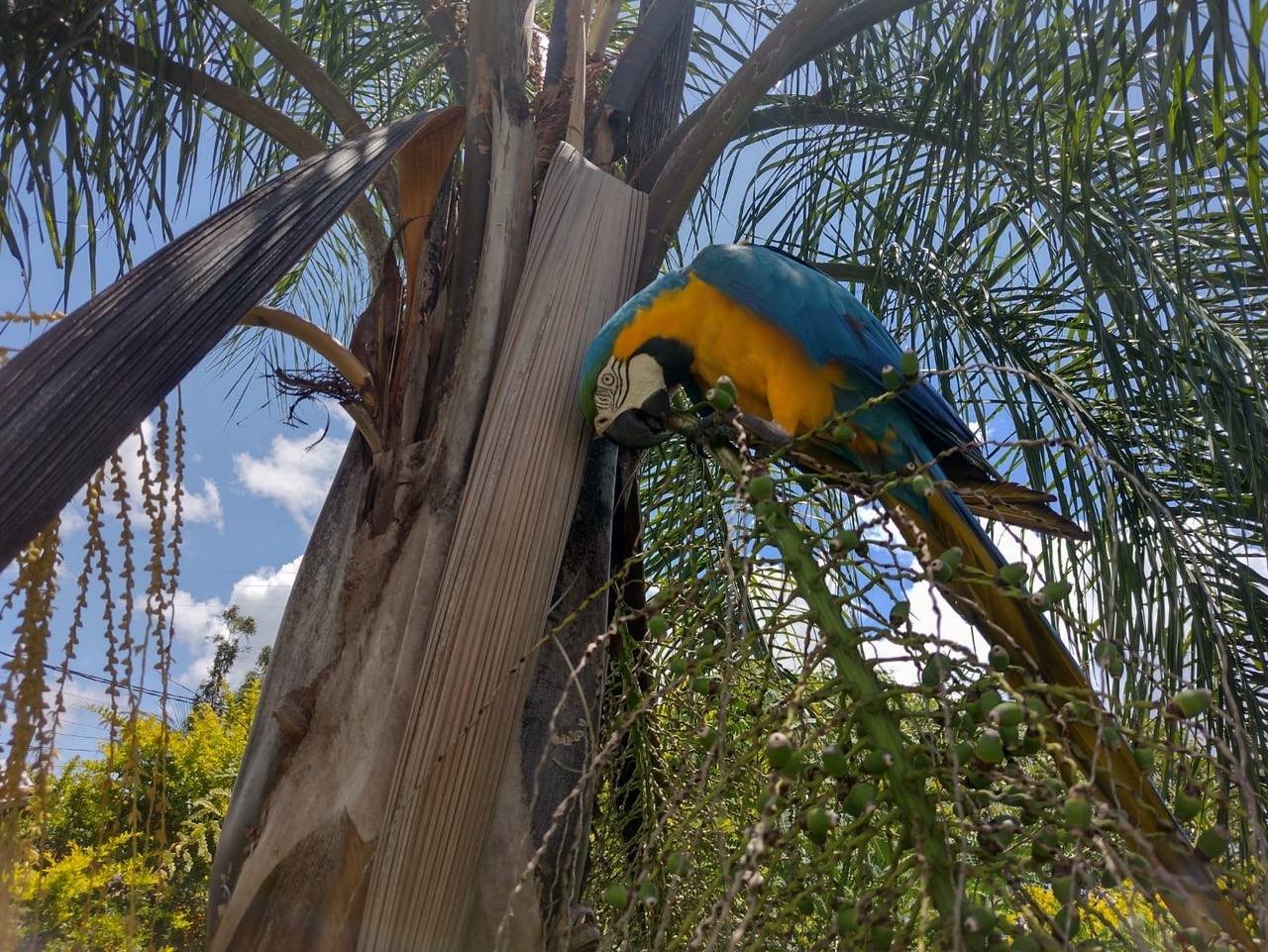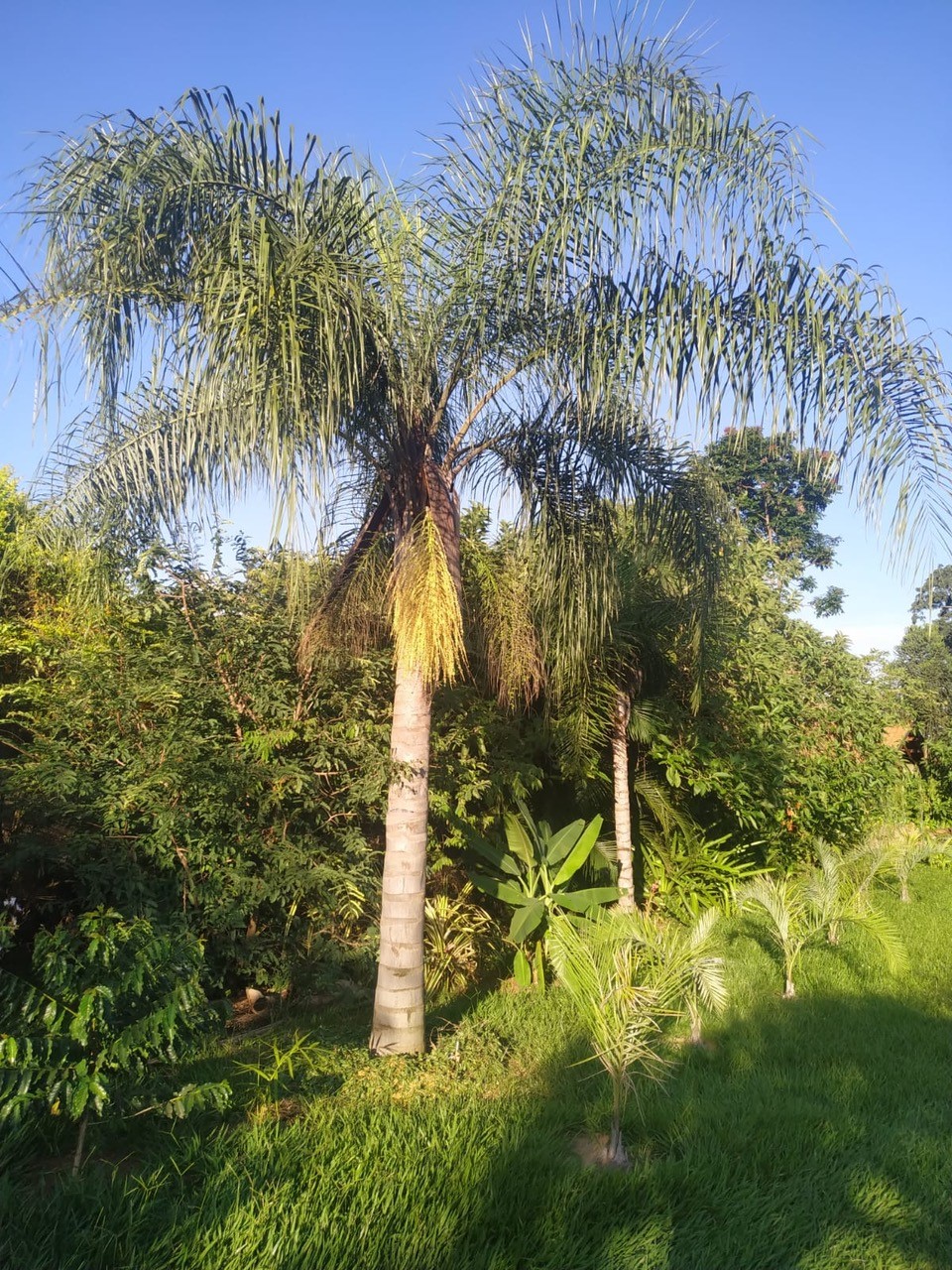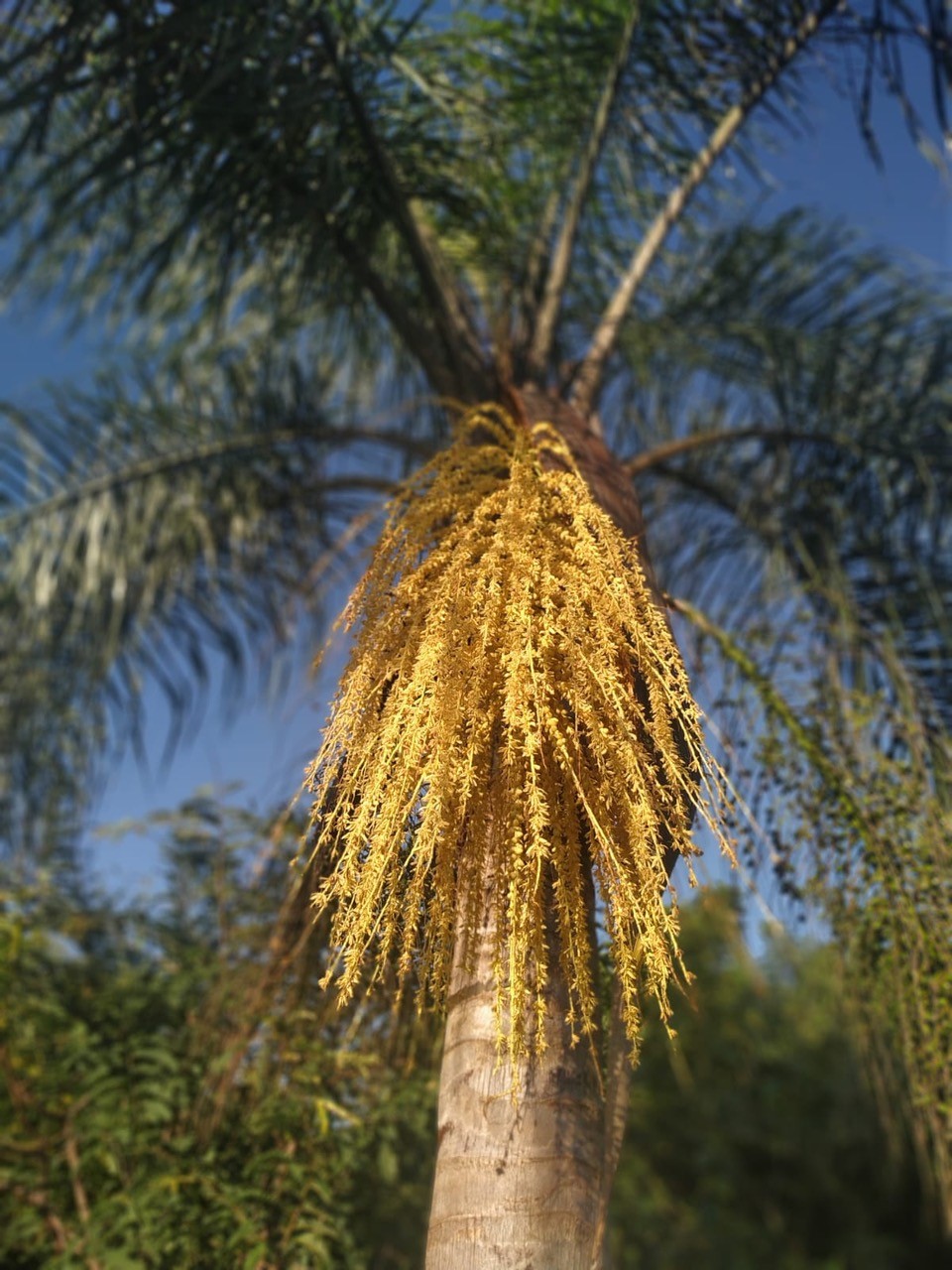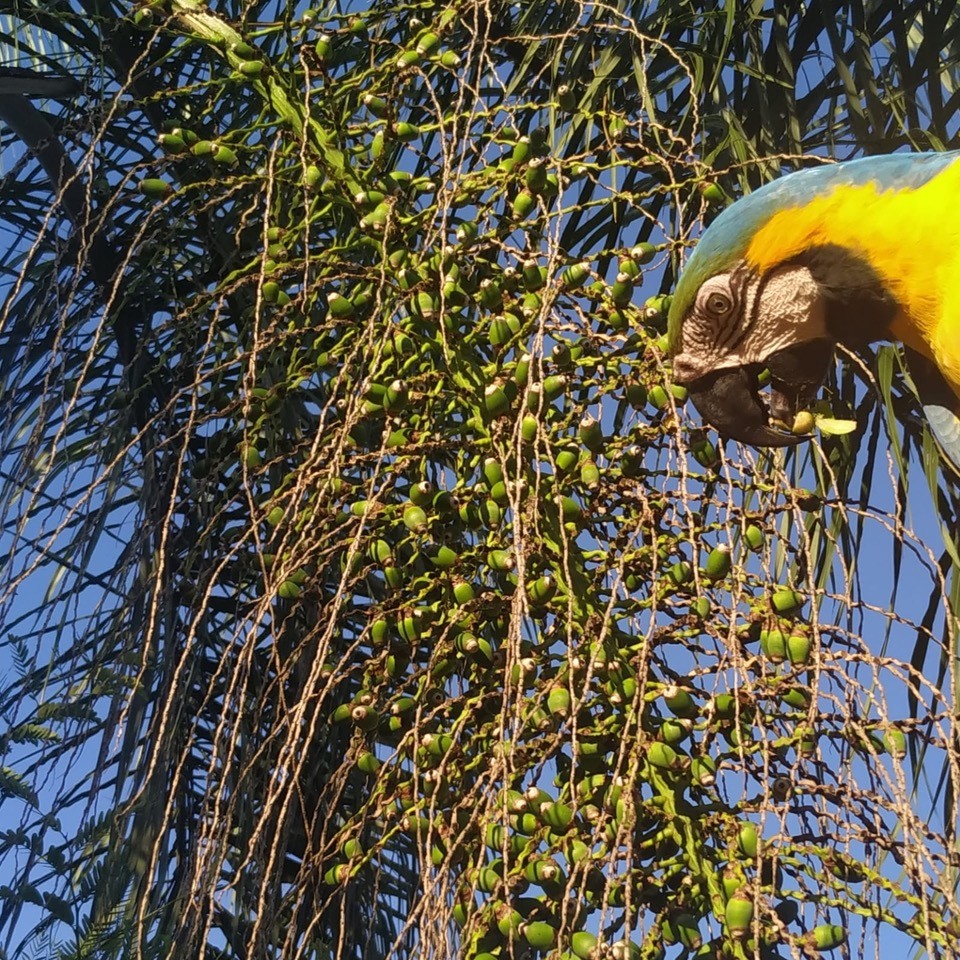The area we carefully selected for releasing blue and yellow is well preserved and connected to forested fragments along the streams and rivers of the Rio Pardo basin. This area has patches of open areas of Cerrado and riparian forests (more dense vegetation along springs, streams and rivers). The area once was populated by blue and yellow macaws that for the past 60-70 years have disappeared from the area. The actual causes of this extinction are not fully understood, but it´s believed to be due to an inaction of forces in deforestation, use of pesticides and poaching of nests. During the past 60 years a lot has changed in the area, poachers no longer exist (the population of other parrots that did not cease to exist in the area aren´t object of poaching because of the severe laws and financial penalties we now have in the area. The absence of the larger macaws in the area also enabled the area to restore food sources such as palm tree fruits/nuts that are not used by other parrots (they aren´t strong enough to break the nutshell and eat the nuts). In this sense, the niche once occupied by the larger parrots is free and can be occupied again if release programs are done effectively. The area we chose for the release is perfectly suitable for the blue and yellow macaws come back and a small number of less than 20-30 macaws should do well in the area. But we must think long term and what will come once this release program has been a great success and the population starts to grow. This is the reason we want to increase food and nesting sources in the nearby area, so we carefully chose seven plant species that directly help parrots to thrive.
BRI Project Updates
Macaw Release and the Jerivá Syagrus romanzoffiana Palm TreeFebruary 24, 2022
Visit a Project Page
Blue & Yellow Macaws | Great Green Macaws | Palms for Parrots | Scarlet Macaws | Sun Conures | Thick Billed Parrots
Support Us
BRI could not exist without the generosity of our supporters.
By making a tax deductible donation to support the work being done by BRI, you join a community that is committed to helping save endangered bird species for future generations.
With your gift you are investing in nature’s future and become a partner with BRI as we work to save endangered birds through reintroduction programs, research, education, and habitat conservation efforts.
Donations made to Bird Recovery International are tax exempt. BRI is recognized by the IRS as a 501(c)3 organization. IRS TIN # 26-0172673
